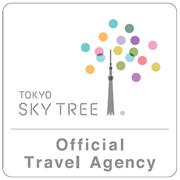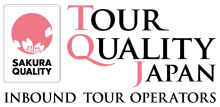events&festivals
Asakusa Sanja Matsuri / Asakusa
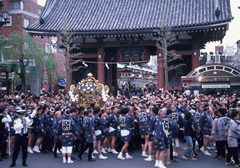
The Sanjya Matsuri is one of the largest festivals in Tokyo.
the festival is held in honour of the three local men who founded Sensoji Temple. The highlight of the festival is the parade of three mikoshi shrines through the streets of Asakusa that appear on the Sunday. You will also see smaller neighborhood mikoshi amongst the streets of Asakusa during the festival.
It's attracts Visitors and locals visiting Asakusa over the three days of the festival.
Date:The Third Weekend of Every May
Location:Sensoji Temple(Asakusa)
Official site(EN):http://www.asakusajinja.jp/english/
Hozuki Ichi(ground cherry Fair) / Asakusa
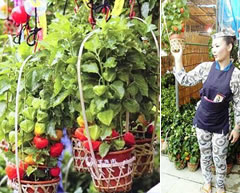
At the Senso-ji Temple in Asakusa, the Japanese unique traditional event, called the Day of 46000 Blessings (Yonman-rokusen-nichi,) takes place in every 10th of July. As legend goes, if a person prays at the temple on this day, he/she would be the equivalent of 46000 days of prayers.
Plus, Hozuki Ichi (the Chinese Lantern Plant Fair) also takes place in July 9th and 10th of July at Senso-ji temple. The Hozuki plants sold here are cultivated in Shikabone-cho in Edogawa-ku, and are really wonderful.
Date:Every July 9th and 10th
The Venue for the Festival:Sensoji temple
Sumida River Fireworks Festival / Taito-ku and Sumida-ku
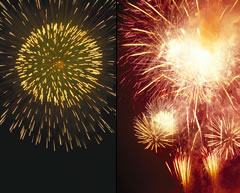
The Sumida River Fireworks Festival is one of the most worthy firework festivals in Japan.
The origin of the festival can be tracked back to 1793. At time, the first Sumida River Fireworks Festival was held to mourn the victims of the plague. Unlike fireworks displays in other countries, interestingly, the Sumida River Fireworks Festival follows the Japan’s traditional way of being an intense competition between rival pyrotechnic groups.
Today Sumida River Fireworks attracts almost 1.5 million spectators who gather to watch to 20,000 colorful explosions in the night sky.
Date: Every Late July(The festival will be cancelled in case of rain.)
Place: The 1st Venue: Between Sakura Brdg., and Kototoi Brdg.
The 2nd Venue: Between Komagata Brdg., and Umaya Brdg.
Website:http://sumidagawa-hanabi.com/index.html(Ja/EN)
Asakusa Samba Carnival / Asakusa
The Asakusa Samba Carnival is held annually, on a Saturday towards the end of August, in Asakusa, one of Tokyo's popular summer festivals. The festival and parade draws more than 500,000 spectators every year.
The main attraction of the festival is the samba parade contest. The Carnival invites samba dance teams from all over the japan and the dance’s homeland in Brazil to compete with around 3,500 samba dancers participating in hopes of snaring prizes offered to the best teams.
Date:Last Saturday in August
Place:kaminarimon street in Asakusa
Year-end Fair / Asakusa
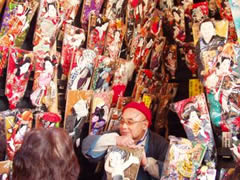
Annually, for only 3 days from the 17th to 19th of December, yearend-unique fair, named the Hagoita (battledore) Fair, takes place on the grounds of Senso-ji Temple with cheerful atmosphere.
A hagoita is often decorated with the figures of popular Kabuki (e.g., Sukeroku and Fuji musume) and the persons of the year including sport athletes and artists.
Around 50,000 battledores are sold in only 3 days, and is usually displayed in a house as a New Year’s ornament.
Date:Dec.17th - 19th
The Venue for the Festival:Sensoji Temple
Yunishigawa Kamakura Festival / Yunishigawa
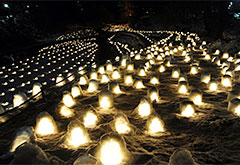
The Yunishigawa Kamakura Festival is held over a period of almost three months from mid January to late March, and hundreds of snow domes are built and illuminated by candle lights.
Visitors can enjoy fantastic beauty of scenery during winter season.
Date: Every Late January – Late March
The Venue for the Festival: The banks of the Sawaguchi River (main venue)Heike Clan's Settlement Ground
Kinu Hime Festival(Hina Doll Festival) / Kinugawa
Every March 3rd, Doll Festival Day or Girls' Day, the traditional Japanese festival held to wish girls both health and growth.
In Kinugawa Onsen and Kawaji Onsen areas, at about 20 hotels and facilities, colorful hina dolls, which is believed protecting girls from bad luck, are displayed during the period from on early February until late March.
Visitors can enjoy seeing a variety of hina dolls including valuable antique one which were made in late 18th century.
Date: Every Early February – Late March
The Venue for the Festival :Participant hotels and facilities in Kinugawa Onsen and kawaji Onsen areas.
Moonlight Flower Gallery / Kinugawa
The great illumination-event, “the Moonlight Flower Gallery,” has started since the year of 2009.
In the evening time, each lantern is lit up, and visitors can enjoy the fantastic scenery.
Kinugawa Park and its surrounding area have formed the main venues, and enjoyable events are to be held, including the “Starry Sky Concert,” which features musical instruments that harmonize with the natural backdrop and the moonlight as well.
Date of the Festival:Every Early Late September – Early October
The Venue for the Festival: Kinugawa Park & Kawaji Fureai Park.
Nikko Grand Spring Festival / Nikko
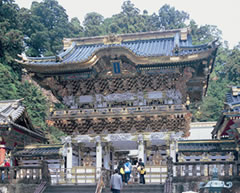
On UNESCO's World Heritage Site, Nikko Toshogu Shrine, the shrine's Grand Spring Festival takes place on every May 17th and 18th.
Popular yabusame (Shinto Ritual Combining Archery and Horseback Riding,) event is planned at on May 17th. Meanwhile, Hyakumonozoroe Sennin Musha Gyoretsu (the 1,000 Samurai warriors' Procession), of about 1,200 people dressed in historical samurai costumes and portable shrines travel about 1 km on the 18th.
* Nikko Grand Spring Festival is general name for the festival combining Shinto Ritual Combining Archery and Horseback Riding and The 1,000 Samurai Warriors' Procession.
Date: May 17th and 18th
The Venue for the Festival: Toshogu Shrine (the alter)
Shinto Ritual Combining Archery and Horseback Riding
"Yabusame," Shinto Ritual Combining Archery and Horseback Riding, is a ceremonial mounted archery in traditional Japanese archery.
Yabusame was originally started in the beginning of the Kamakura period, it is said.
Minamoto no Yoritomo (Barbarian Subduing Generalissimo) became alarmed at the lack of archery skills his samurai had. He organized yabusame as a form of practice.
Date: May 17th
The Venue for the Festival:Toshogu Shrine
The 1,000 Samurai Warriors' Procession
"Hyakumonozoroe Sennin Musha Gyoretsu," the 1,000 Samurai Warriors' Procession, is the biggest shito ritual ceremony among ceremonies of Toshogu Shrine in Nikko.
The first burial place of Ieyasu Tokugawa was at Toshogu Shrine of Mt. Kuno in Shizuoka Pref.
When the first anniversary of his death was held, as stated in his will, his burial place was moved from Mt. Kuno to here, in Nikko.
Today, people can enjoy seeing the re-enacted the 1,000 samurais procession of the time.
This Shinto ritual ceremony is held twice a year on May 18th and Oct 17th, and formally known as Shinyo-togyo (moving of divine portable shrines).

